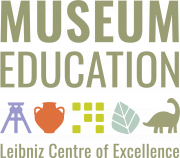Day 1: Non-Visitors/Missing Visitors
Tuesday, November 9th, 2021
Part I: Keynote and Short Talks
What can museums learn about non-visitors from luxury fashion? – Shaz Hussain
Keynote
On the surface it may seem that museums couldn’t be further apart from the world of luxury fashion. However, if we put aside our assumptions about both spaces there may be more in common than we originally thought. Having worked in both sectors I want to share my experience of working at a luxury fashion house archive and what ideas I would take back to museums. In this talk, Shaz Hussain swaps museum tote bags for Louis Vuitton purses and Chanel handbags to unpack the tools that fashion houses use to engage their clients and how this might tell us more about the museum non-visitor.
Shaz Hussain is an Archive Collections Officer working in luxury fashion. She was previously an Assistant Curator at Science Museum and has held roles at the Royal Air Force Museum and the Design Museum in London. Shaz has also worked as a consultant, specialising in diversity and inclusion, for museums and galleries in the UK, Europe and the US.
Covid-19 and small museums’ audiences in the UK: challenges and opportunities – Christina Lister
Short Talk
The pandemic has caused enormous disruption for small museums across the UK. But alongside the challenges for their audience engagement, there have also been opportunities. Many museums have been forced to, or chosen to, try new ways of thinking and working. They have worked hard to remain relevant to their existing audiences, whilst reaching out to new ones. But who are these museums still not engaging?
Christina Lister highlights key research on the impact of Covid-19 on the UK’s small museums’ audiences, and opportunities that have emerged. She also shares examples of museums’ resourcefulness and creativity in their audience engagement work over the last 18 months. She encourages museums to build on the experiences of this period, and ends by suggesting some questions for museums to consider when planning their audience development over the coming months and years.
Christina Lister is a UK-based audience development and marketing consultant, trainer and facilitator with 20 years’ experience in museums, heritage sites and cultural venues. She has worked with organisations including Jane Austen’s House, the Science MuseumGroup, the Museum of London, American Library, Dundee Science Centre, the Association of Independent Museums (AIM), the Arts Marketing Association and Norwich Historic Churches Trust. Her work has won a range of awards and she is a regular contributor to sector media and events. Christina is passionate about championing audiences and broadening the appeal of, and access to, heritage and culture.
Audiences inside and outside of the museum – Marie Hobson
Short Talk
Finding out why some audiences are not coming to your museum is only one part of your job as an audience researcher; convincing internal stakeholders to act on the findings is the other, often more challenging, aspect. In this session, Hobson shares some of the potential barriers and opportunities for successful audience advocacy based on knowledge management literature and personal experience sharing nonvisitor research at a Museum as part of her dissertation.
Marie Hobson has over 10 years’ experience of conducting and co-ordinating audience research and insight in museums, having worked at the Science Museum, Natural History Museum and now at the Victoria and Albert Museum in London, U.K. In these roles, she has been responsible for understanding visitors and non-visitors to inform audience development strategies. Marie is currently pursuing a professional doctorate at King’s College, London. Her dissertation investigates museum practitioners’ understanding of research and evaluation; professionalization of visitor studies; and how to apply organisational learning theory to museums to increase the impact of audience research on practice.
Experiencing, enjoying, touching – approaching audiences of science communication – Philipp Schrögel
Short Talk
While traditional understandings of science communication focus on public lectures, journalism and mass media audiences, the modern understanding considers communication in the context of a variety of aspects: from informal learning spaces, including museums, to edutainment approaches and Open Science or Citizen Science. Also, the modern understanding of the goals of science communication goes beyond educating the lay masses, particularly considering societal and political implications of science communication – similar to the debates on new definitions for the museum. However, two aspects often overlooked are the question who is reached by the activities and what other effects should be considered besides specific learning outcomes. This contribution provides an overview on approaches to widen the perspectives and audiences of science communication, including experiences from own research projects on edutainment through science slams, underserved audiences, the role of haptics in a museum of natural history and science communication in rural areas.
Philipp Schrögel is a science communication researcher and practitioner. His focus in both areas lies on creative and participatory forms of science communication – ranging from science slams to science comics or science street art. A central question to him is, how public engagement with science can reach people beyond the traditional educated classes. In thinking about access and accessibility in science communication, he questions traditional methods and traditional aims of science communication. He currently works as research area coordinator and is responsible for science communication at the Käte Hamburger Centre for Apocalyptic and Post-Apocalyptic Studies (CAPAS) at Heidelberg University.
